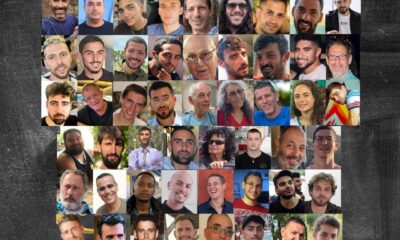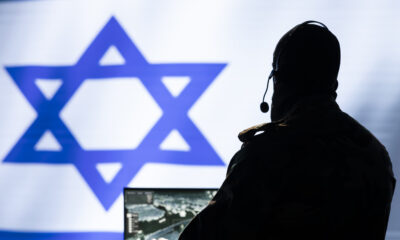
OpEds

The nightmare of urban warfare
The prospect of the Israel Defense Forces (IDF) conquering and occupying the territory of Gaza is daunting. Urban warfare is a costly, messy business at best, and can cause the ruin of an attacking army at worst.
Revisiting some of the city battles of the not-so-distant past helps one to understand the human and economic cost of such ventures. The German 6th Army ceased to exist when the Soviets surrounded and forced its surrender at Stalingrad in February 1943. The gruelling six-month street and building-to-building battles cost hundreds of thousands of casualties on both sides. Hand-to-hand encounters descended to barbarism, and an enormous cost in human lives was expended to gain a few metres of territory or recapture a building.
Recent history is littered with the bloody accounts of the desperate urban battles of Huế in Vietnam in 1968; Grozny in Chechnya from 1994 to 1995; Fallujah in Iraq in 2004; Mosul in Iraq from 2016 to 2017; and Mariupol in Ukraine in 2022. Most armies will avoid urban warfare whenever possible.
The IDF is no stranger to urban warfare, having battled in Jerusalem in the War of Independence and finally conquering east Jerusalem in 1967. The IDF also suffered a setback in the Yom Kippur War in 1973 when it attempted to occupy Suez city but was repulsed with heavy casualties. The IDF avoided all-out urban warfare in Beirut in 1982, when Palestinian Liberation Organisation fighters were deployed in the Palestinian refugee camps rather than the city itself.
In Operation Defensive Shield in 2002, the IDF temporarily captured most of the major cities in the West Bank. During the Second Lebanon War in 2006, Hezbollah effectively defended towns and large villages against the IDF for an extended period. The IDF was criticised in several quarters for having poor intelligence, being unprepared, ill-trained, and too reliant on air power.
Operation Cast Lead in 2008 was a 22-day IDF incursion into Gaza, in which only a small number of Hamas operatives were killed in an operation whose objectives were unclear. Further IDF operations into Gaza followed with Pillar of Defense in 2012 and Protective Edge in 2014, which relied heavily on air strikes while avoiding boots on the ground. Hamas has used its extensive underground tunnel system to avoid the worst of the Israeli air power.
The IDF, traditional manoeuvrists, possess a way of war that avoids needlessly expending lives in the pursuit of dubious victories. The receding prospect of conventional war since 1973 has resulted in the rise of asymmetrical warfare in the urban areas of Gaza, the West Bank, and Lebanon. Israel has had to become more adept at manning static defences and conducting a raiding strategy. These doctrinal changes are, in many ways, anathema to the Israeli way of war. However, the IDF hasn’t been idle on the doctrine side of urban warfare either. It built a 60-acre urban warfare training centre in southern Israel in 2005, accommodating an entire brigade at a time. It also came up with an extraordinary piece of what can only be described as post-modern military doctrine titled “Walking through walls” authored by an Israeli architect, Eyal Weizman.
“There’s no way of moving otherwise. If until now you were used to moving along roads and sidewalks, forget it! From now on, we all walk through walls,” it says.
The Israeli doctrine calls for the indirect approach of manoeuvring through buildings in the vertical and horizontal plane by blasting through walls and floors and avoiding the booby-trapped streets and alleys where the enemy waits in well-prepared defensive positions ready to ambush an attacker. Therefore, one can be assured that the IDF has gained extensive combat experience and applied much intellectual thought to the doctrine of urban warfare.
What do the Israelis face in occupying Gaza and eliminating the Hamas leadership – their stated objective? Urban warfare is ambiguous and distinct from regular conventional war outside cities. It’s where civilians turn into combatants and back again, even several times daily. Unlike the attacker, those defending usually have the advantage of an intricate knowledge of the terrain they are defending. Unscrupulous defenders will use civilians as human shields and think nothing of expending civilian lives to gain a propaganda edge.
The battlefield is three-dimensional in its length, breadth, and depth. Combat develops underground, at ground level, and the heights of multi-storey buildings. Especially in asymmetrical warfare, urban combat overwhelmingly favours a relentless defender and levels the playing field. This is the preferred combat zone for the technologically challenged and less well-equipped, irregular force. The fog of war descends quickly in built-up areas, where rubble, booby traps, and ambushes await the attacker on every corner. Confusion rapidly breaks down command and control at operational level, making the co-ordination of isolated attacking units near impossible.
However, there’s the overlooked fact that Hamas may have lost up to 1 500 of its elite militants in the initial attacks and mass murder of civilians on 7 October. If the numbers are correct, these would be the cream of the Hamas militia, specifically selected for their expertise and ruthlessness. The remaining Hamas defenders may not be as motivated to achieve martyrdom in the face of overwhelming Israeli firepower.
The civilian population of northern Gaza seems to have heeded Israeli warnings to evacuate the area. At the time of writing, about 60% of the civilian population is on the move. Hamas will be less effective if deprived of its human and hostage shields. But in any event, this won’t be an easy battle for the IDF or Gaza citizens caught in the crossfire. At the strategic level, time favours Hamas as every civilian death and each moment that passes in inactivity erodes the moral high ground that Israel momentarily occupies.
Does Israel possess the resolve to reoccupy Gaza in its entirety, and will it weather the storm of international criticism, coupled with internal challenges posed by the high casualty figures sure to result from this massive urban operation? More importantly, what’s the Israeli endgame? Permanent occupation isn’t possible, and Israel needs to provide a vision for a post-Hamas Gaza. The military will be able to buy enough time only for politicians to provide lasting solutions.
- Dr David Brock Katz is a research fellow at Stellenbosch University in the faculty of military science. He has published three books and numerous academic articles dealing with aspects of South African military history and military doctrine.










